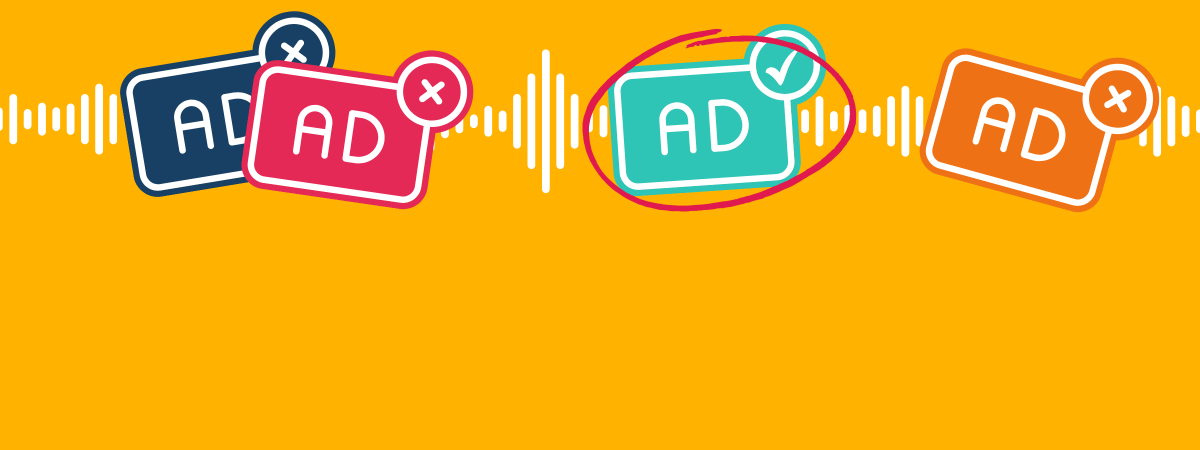FM Radio in the 70s
I lived among the dinosaurs. My career in audio started just as FM radio was catching fire, grabbing audience share from AM radio.
Those were heady times. Station owners were turning their FM signals over to 20-somethings because “the kids will know what to do with it.” Mostly, we knew we didn’t want to make it sound like AM radio.
The technical sound was better than AM. No static, and in stereo no less. But it went well beyond that – FM radio was cool. While the AM Top 40 stations repeated cheesy hit singles over and over, we went deeper, playing album cuts from artists who had something to say. While AM Top 40 had screaming DJs who talked down to its teen listeners, the FM style was more laid back, treating listeners like the adults they were becoming.
The ads on FM were also different. We ran fewer ads than AM. Instead of what seemed like ads after every song, we ran music sweeps of three or more songs. And we wanted to make sure the ads fit with this new listener experience. That was a big part of my first job as a copywriter, then Creative Director. We turned down a lot of ads – no tacky ads from used car dealers. We’d rewrite and re-record ads supplied by the AM stations – toning down the hard sell and using hipper music beds. And the sales department sought out those clients with a message relevant to our listeners – concerts, stereo stores and waterbeds.
What Happened to the Ads When FM Radio Became Mass Appeal Radio
By the early 80s, the success of FM music radio had largely pushed music off the AM dial. No longer serving the precious niche that helped to fuel its growth, FM radio was in demand from advertisers looking to reach a mass audience.
From that point on, except for niche formats like Smooth Jazz or Christian, little attention was paid to framing an ad strategy that fit the listener experience. All ads were welcome. Then, as time spent listening started declining in the 2000s and 2010s, more ads were added to hang on to revenues.
Even with a heavy spotload and a less personalized approach, FM music radio still brings big audiences to advertisers. But FM radio is no longer cool the way it once was.
The Opportunity for Podcast Ads
I was reminded of that magic moment for FM when I was watching Tom Webster’s webinar for Sounds Profitable’s latest quarterly research study “Ad Nauseam”(for which Signal Hill Insights was a research partner). All the evidence says that’s where podcasts are living now.
Podcasting is still the cool kid on the media block, and the ad experience for listeners is still a net positive. As an on-demand medium covering virtually every possible information or entertainment niche, podcasting is intensely personal. Host read ads, for example, play to that strength.
Of the 1,011 past week podcast listeners aged 18+ surveyed in “Ad Nauseam,” most either embraced or at least tolerated the ads they heard on podcasts – 48% said they either enjoyed them or didn’t mind them while fewer than 1-in-10 (9%) found them ‘disruptive’ or ‘intolerable.’
The result is that podcast listeners tend to stick around for the ads, even with a skip button. In another recent Sounds Profitable research study, “The Ad Bargain,” podcasts rank ahead of other media for watching or listening to all the ads they come across.

Securing the Competitive Advantage for Podcast Advertising
Just as FM radio did in the 70s, the podcasting business will evolve as it grows. The challenge will be to maintain a positive ad experience for listeners and, in turn, the premium value that delivers for advertisers.
Listener perceptions of ad loads will need to be monitored as advertising demand grows. “Ad Nauseam” shows that 73% of podcast listeners currently expect between two and three ads per episode. Most indicate they will tolerate more, but there are limits – 26% say that an ad load that exceeds their expectations will lead them to stop listening to the episode or the podcast itself.
Prioritizing the personal relevance of podcast ads will be paramount. Collectively, podcasts are becoming a reach medium, but their superpower is the personal connection each individual podcast makes with its audience. Podcasting is not broadcasting. Podcast advertising is most effective when it leverages that unique relationship with the podcast consumer.
While host-read ads have proven successful at capitalizing on the personal nature of podcasts, the difficulty to scale host-reads will require other approaches to support advertising growth. A study we recently conducted in partnership with Gumball and ART 19 identified a strategy that helps to extend the power of the host-read to the full podcast universe using the ‘talent-read.’
The search for scalability should spur other innovations that ensure the fit of the ad to the listener who chose that podcast, not only when it comes to brand, but also content and tone of the creative. Advanced targeting, especially contextual targeting, offers interesting opportunities. The need is clear. Even now, 37% of podcast listeners who skip ads identify ‘lack of interest or relevance’ as a primary reason for skipping ads, according to “Ad Nauseam.”

Finally, publishers and podcasters need to be selective about the ad creative they accept, especially when it comes to blindly using the same ads that air on radio or streaming music. Convenient as it may be, running ads from other platforms on podcasts can be self-defeating. Depending on the ad and the podcast, that can work. But that misses a fundamental reality. Most podcast listening is done using headphones vs. speakers; the ad doesn’t have to grab the attention of listeners from across the room as a radio ad might; rather, it needs to hold the attention of a listener engaged in their favorite podcast.
This came through loud and clear in a small study we conducted last year on a podcast ad for an insurance company. The ad was the audio track for a TV ad. The setting was a TV game show with all the requisite bells, whistles, horns and shouting. The response from the podcast listeners we surveyed?
Nearly half (49%) strongly agreed they ‘would skip this ad whenever they heard it.’
Likewise, the kind of ad that works on an unfiltered comedy show may not fit on an investigative news documentary. Going from a somber moment to a blaring jingle breaks the mood, and forces the listener to pay attention, but not in a good way.
Mark Twain once said “history doesn’t repeat Itself, but it often rhymes.” Podcasting may well follow a different trajectory than FM radio. And so it should, if the industry works to preserve the distinctly personal listening experience that is podcasting.
It starts at the ground level, by understanding how listeners feel about the ads in your podcast. Book a call and let us know how we can help.




